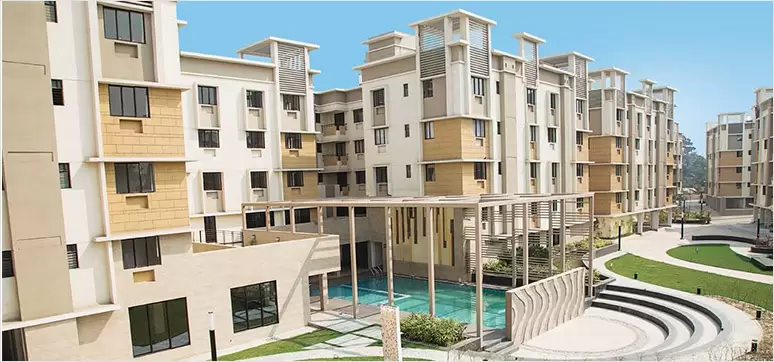The real estate industry is suddenly faced with two big events, Real Estate Regulation & Development Act (RERA) and the Goods and Services Tax (GST), both of which are forcing it to become more transparent and process driven. RERA aims to regulate the unregulated sector and bring some discipline to check the project delays and unfulfilled promises from developers. GST aims to rationalize the tax structure and bring uniformity in prices, which is expected to benefit both the developers and the home buyers. The effects of this series of policy changes are going to be long term. How it is going to change the market, is yet to be seen. WFM spoke to many prominent industry leaders on the impact of RERA and GST on the real estate and façade and fenestration industry. Here are the excerpts from the discussions:
Post your Requirement
From July 1, 2017, Goods & Service Tax (GST) effectively cuts through a perplexing taxation complexity in the country. It replaces the multiple taxes levied by the central and state governments and has become subsumed of all the indirect taxes, including central excise duty, commercial tax, octroi tax/charges, value-added tax (VAT) and service tax.
The Real Estate Regulation and Development Act, 2016 (RERA), intends to protect the interests of home buyers and enhance transparency in the real estate sector. The Government of India enacted RERA on 26th March 2016 and all its provisions came into effect, from May 1, 2017. RERA, it is hoped, will make real estate purchases simpler by bringing in better accountability and transparency, provided that states do not dilute the provisions and the spirit of the central act.

Jayant Gosavi Senior Vice
President–Gera Developments
The RERA Effect
- RERA clearly specifies that the developer is liable to repair and responsible for any structural defects for next 5 years from the date of handover. However, there needs to be more clarity on specific defects which may come as RERA gets mature.
- Till date, civil contractors give normally 12 months defect liability warranty; however, now developers need to pass on the 5 years liability towards the contractor. In this scenario, followings things may happen:
- Oblivious, contractor may charge extra premium for an extended period of liability. The premium can be negotiated for specific items.
- Also towards the implementation of RERA, it is foreseen that many small developers may face liquidity issues and there will be lock down period for many upcoming projects for initial couple of years. This could trigger reductions in number of projects and therefore will eventually lead to more competitive bidding by all contractors at lesser premiums.
- The manner in which developers may procure only material or with material and labour combined will be largely governed by:
- Ease of passing off the GST advantage by the contractor to the developer. Although with the non-profiteering clause in GST, all the GST benefit is required to be passed on to the next party and eventually to consumers, it is yet to see how much of it will eventually be feasible. One way to ensure this is to purchase material directly to ensure that entire GST input benefit from manufacturers is collected by the developers directly.
- A Strategy to deal with the warrantee clause in RERA; in order to ensure single point ownership of material and workmanship, it may be prudent to go for general contracting strategy, i.e. with material orders to achieve the much better quality and 100% liability transfer to contractor. Alternatively the developer may have to increase his own overheads to deal with the liability of the material part being procured in house.
- Earlier contractors had the tendency to load the risk component of project encumbrance factors such as sanctions, land litigations, etc. This component will drastically reduce in RERA scenario as all relevant sanctions would be in place before project starts.
- Since the project completion burden will be crucial, developer may transfer this risk to contractor. Hence the liquidated damages clause would become more effective. Cost towards the risk of non-completion in time may be an add on.
The GST Effect
Contract price in effect would reduce due to elimination of excise duty and subsequent taxes on it. However, final cost to compete with taxes will depend on the total configuration of material involved in the project by computing the individual items and summing it up. E.g. In Aluminium window, the rate may be derived considering taxes on glass, aluminium extrusions, wool pile, EPDM, locks etc. Add-ons are its labour component, availing tax credits, etc.
Related Article: GST impact on Cement industry
It is estimated that, post GST, the façade works, i.e. Aluminium and glass rates, are likely to reduce. Approx. 12.5 to 14% of rate benefit could be possible (Please see Annex A). Provided all GST input credits are completely passed on to the succeeding links up to the final end customer. However, impact of other overheads due to GST documentation and cash flow blockage in case of GST rate differential (for e.g. Glass GST is 28%, however, if the same is supplied and installed by the contractor, the GST collected is only 18%, as such an extra 10% GST credit will be pending for refund for the contractor) will have to be factored in.
Impact of GST on Prices of Glass, Aluminium Windows and Hardware
| GST Working for Aluminium Window & Glass Work. Rates are indicative only for illustration | |||||||||||||||||
| Previous | GST | ||||||||||||||||
| S.No. | Item | Qty | Unit | Basic Rate | Excise % | Previous Vat | Vat Set Off | Insu | Fright | Total | Revised ( GST ) | Insu | Fright | Total | GST Benefit | Total | Net Benefit in % |
| 1 | 10mm Toughened Glass | 1 | m2 | 1000 | 12.50% | 13.5% | 10.8% | 1% | 4% | 28% | 1% | 4% | -28% | ||||
| 125 | 135 | 108 | 10 | 40 | 1202 | 277 | 10 | 40 | 1327 | -277 | 1050 | -12.65% | |||||
| 2 | Aluminium | 1 | Kg | 140 | 12.50% | 13.5% | 10.8% | 2% | 2% | 18% | 0% | 2% | -18% | ||||
| 18 | 19 | 15 | 3 | 3 | 167 | 25 | 0 | 3 | 168 | -25 | 143 | -14.43% | |||||
| 3 | Hardware | 1 | L.S | 5 | 12.50% | 13.5% | 10.8% | 2% | 2% | 18% | 0% | 2% | -18% | ||||
| 1 | 1 | 1 | 0 | 0 | 6 | 1 | 0 | 0 | 6 | -1 | 5 | -14.43% | |||||
| This illustration is based on direct purchase scenario or with assumption that the entire GST benefit of all material will be passed on to Developer by the contractor. | |||||||||||||||||
Annex A: GST working for Aluminium window and glass work; source – VAT Data – www.mahavat.gov.in
The Cost Factor
Due to GST, prices of facade/window works will go down. However, due to RERA’s 5 Year warranty clause, contractors may charge extra premium towards operation and maintenance and prices will go up. Five-year warranty clause has another implication too, where due to competition and to keep warrantee cost low, quality of work will eventually improve. At the same time, due to tight fiscal control in RERA and limited project launch, competition among contractors will go up and hence eventually prices may go down.
Quality Gains
Five year warranty clauses may force manufactures to give back to back warranty and eventually product quality would improve. The big players of the trade may take advantage of their technological edge and can eventually increase the market share due to warrantee strength and thereby try and reduce the price gap with the local players. This coupled with GST tax benefit will mean that the effective price of better quality material will be marginally higher than current prices. We may expect big façade players like Rayners/Fenesta to take advantage of this opportunity. Hence, it is expected that the quality will improve.
Reduction in Paperwork
Reduction in paper work related to different tax heads is definite. However due to GST input credit requirement each invoice will have to be posted on monthly basis with relevant HSN code by both the supplier and buyer on the GST portal in order to secure the GST input credit. This part of posting invoices will need accurate reconciliation by both buyers and sellers before the invoices are posted as any minor mismatch on the portal will be rejected by the system and the input credit will be lost. Hence the invoicing part may become time consuming and will require some amount of paper work.
The Payment Structure
Payment conditions need not change; however, for the GST input credit to be valid, the buyer would need to clear the invoice payment within 180 days from date of invoice which is generally the case. GST input credit limit of 180 days will however impact the retention amount. The concept of retention money will have to be implemented by means of bank guarantee and all payments including retention amounts, will have to be made within the 180 days window to ensure GST input credit is availed and passed on.
Impact of RERA & GST on Real Estate

Express Trade Tower (ETT) – NOIDA (Image credit – 3A Composites India Pvt. Ltd)

Anuj Puri, Chairman, ANAROCK
Property Consultants Pvt. Ltd
GST has been predominantly conceptualized around a ‘One Nation, One Tax’ philosophy and will help eliminate the previous cascading tax structure, ease compliances, create uniform tax rates and structure, and help in reducing additional tax burdens on consumers, says Anuj Puri, Chairman – ANAROCK Property Consultants Pvt. Ltd.
However, the biggest game changer in GST is the introduction of Input Tax Credit (ITC), whereby credits of input taxes paid at each stage of production or service delivery can be availed in the succeeding stages of value addition. This makes GST fundamentally a tax only on the value added at each stage. This means that the end consumer will thus only bear the GST charged by the last dealer in the supply chain, with set-off benefits at all the earlier stages. To ensure that manufacturers, developers and service providers pass on the benefit to the final customer, the Government has included an anti-profiteering clause in the GST bill under section 171 of GST law. This clause clearly states that it is mandatory to pass on the benefit of tax reduction due to ITC to the final customer.

Rajesh Chawla, Director,VEKA
India Pvt. Ltd
Rajesh Chawla, Director, VEKA India Pvt. Ltd, points out that RERA is the regulation that was much required for the builders industry, since it will bring in more transparency, and organized & quality focused approach in the business functions. Since the builders are now required to warrant the premises they sell / offer, in turn, they have already started to ask their vendors to provide warranty. Which means the quality will certainly get a good push in the building materials sector including the facade & fenestration industry.

Niraj Borikar,Head Marketing,
FunderMax
According to Niraj Borikar, Head Marketing, FunderMax, RERA will impact façade industry positively in terms of accountability, credibility and trust between developers and consumers.
Developers are required to register all new projects with the regulating authority. They must adhere to the sanctioned plan and specifications of the project. Developers are responsible for repair of defects found within 5 years. This means that there will be clear plan sanction and specifications laid down for façade and fenestration works of any project which brings a lot of clarity for budgeting, planning and execution. RERA also brings accountability for not only developers but also for material suppliers and contractors to deliver high quality work as per sanctioned plan and specifications.

Rajesh Mehta, Director, Siddha
Group
“As far as GST is concerned, we are likely to be allowed with distinct inputs for the purchase of construction materials, which in turn may assist in bringing down the costs of construction”, says Rajesh Mehta, Director, Siddha Group. However, he adds, would be able to share our thoughts more strongly only after drawing a parallel between what will engender in comparison to what is being implemented. He is optimistic about the overall impact of the GST bill and sincerely hopes that it offers total transparency across transactions and across industries for all to be impacted positively.

Kapil Chikodi,Head – Business
Development,Glass Wall Systems
Kapil Chikodi, Head – Business Development, Glass Wall Systems, is optimistic and hopeful that RERA and GST would streamline the business activities within the construction industry. Any project coming under the scanner of RERA law will be completed on time and buyers would get the assurance on the timeline of project completion.
GST on the other hand, says Chikodi, paves way for a clean and transparent taxation part. He is optimistic that with one tax, we need not worry about too many of the complications of taxing structure.

PV Somasundaram, Vice President
– Sales Operations,3A Composites
India Pvt Ltd
Pertaining to RERA, PV Somasundaram (Vice President – Sales Operations, 3A Composites India Pvt Ltd) says that the developers will have to take initiative to get registered themselves first. With the insistence on specifying carpet area, RERA will give transparency in the actual usable area and thereby the rate.

Satish Kumar, Country Manager,
Ege Profil – Deceuninck India
Satish Kumar, Country Manager, Ege Profil – Deceuninck India Branch, observes that RERA was passed by the Government to regulate and streamline the real estate industry. Many states are yet to adopt it. Some states have been lenient on projects started before 2014. The real effect of RERA will be seen in the few projects currently registered under it. He is hopeful that, since the developer has to maintain the building for 5 years, he would choose products and vendors who have a good track record and offer good quality products.























Post A Comment